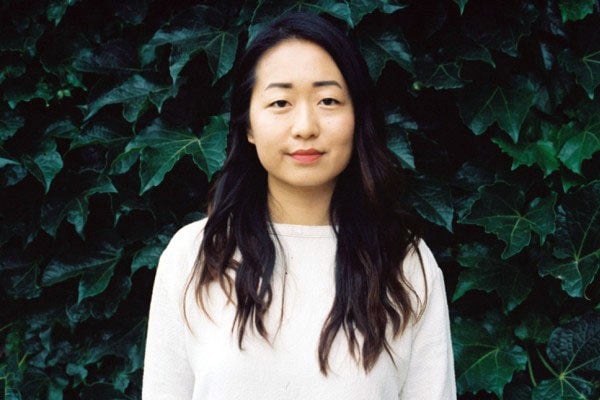
Meet Amy Luo, winner of the Canadian Art Foundation's 2014 writing prize
Published: July 29, 2014
Founded in 2009, the Canadian Art Foundation Writing Prize is a juried prize designed to encourage new writers on contemporary art. This year’s jury included Melanie O’Brian, director of the Simon Fraser University Galleries; Jonathan Shaughnessy, associate curator of contemporary art at the National Gallery of Canada; François LeTourneux, associate curator at the Musee d’art contemporain de Montreal; and Richard Rhodes, editor of Canadian Art.
The winner of this national competition is commissioned to write a feature story for Canadian Art Magazine and receives a $3,000 award, while two runners-up each receive recognition in the magazine and a $1,000 award.
This year members of the University of Toronto community took two of the three prizes. Amy Luo, a fourth-year undergraduate and work-study student, is the recipient of the grand prize and Daniella E. Sanader, who works for the Justina M. Barnicke Gallery and the University of Toronto Art Centre, was a runner-up.
Writer Kelly Rankin caught up with Luo by email to ask her about the competition, what kind of career she imagines for herself and balancing academics with extracurricular activities.
What is your program of study?
My subjects of focus are Art History, Philosophy, and Women and Gender Studies, and I’ll be finishing the last semester of my BA this fall.
When did you first become interested in writing?
In elementary and high school, I found a lot of enjoyment in writing fictional stories. But writing is not something I’ve considered undertaking in a serious manner until more recently.
Though it sounds banal, I probably developed a serious interest in non-fiction writing from working on essays for my university courses. Through essay-writing, I’ve learned to present and argue for ideas with both complexity and precision.
What attracts me to writing is that it allows very precise articulation of thoughts and at same time adequate room for play. This is also why I enjoy reading academic writers like Eve Kosofsky Sedgwick and John L. and Jean Comaroff, who show both erudition in their ideas and finesse in their style.
You hold an internship at C Magazine, served as this year’s art editor of the Hart House Review and you work at the Justina M. Barnicke Gallery. How do you manage to do all of this and keep up with your studies?
It’s definitely challenging and often stressful to work and participate in extracurricular activities on top of a full course load. But I think that the work and activities we undertake on our own volition, beyond mandatory degree requirements, are probably what we will remember most fondly about being in university years down the road.
The University of Toronto is a huge and diverse institution with a lot to offer beyond the classroom in terms of supporting students in pursuing their interests and goals, and one would be remiss not to take advantage of that.
Work-study positions, like the one I’m holding at the JMB Gallery, have flexible hours and are a great way to become acquainted with faculty and staff doing interesting work.
The Art History Department offers credits for relevant internships, so I’ve been able to gain real-life experience and earn credits toward my degree at the same time. I’m also a proponent of the credit/no credit option offered by the University; by selecting this option for one of my classes last year, I was able to learn challenging material I was interested in without having the pressure to earn a high grade.
What kind of career do you imagine for yourself?
My career plans for post-graduation are still nebulous, but I do hope to continue to write about contemporary art and culture. I can see myself enjoying magazine or book publishing, or curating. What attracts me to these undertakings is that they both represent a means to disseminate ideas on issues that are important to me, and also that they provide a context for content-creation that is more slow-paced and creative as opposed to, say, real-time journalism.
The jury unanimously agreed that your writing stood out from all the submissions “for [your] ability to bring together significant observations on contemporary art and larger topical issues.” Please tell us about your submission.
For my submission, I wrote an article on Melanie Gilligan, a Canadian artist who works primarily in video and film. Her work deals intelligently with various aspects of capitalism in its lived reality, from the extension of market rationality into all areas of life in contemporary neoliberal societies to the precarity of the working class since the late 20th century.
I’ve been acquainted with academic texts on these topics from my studies, but Gilligan’s videos have much more to offer than their intellectual and factual content. Her videos are affectively stimulating (she cites David Cronenberg as a major aesthetic influence), contain a good dose of humour, and often come packaged in the form of a television series.
What makes her work effective both as art and as protest, I think, is that it engages us not only intellectually but from many angles, through our senses, through humour and through popular entertainment forms that we’ve all grown up with.
In addition to $3000, you won a commission for a feature article in Canadian Art Magazine. Can you tell readers what that article will be about?
I’ll be working on a new feature article for a future issue. I’m meeting next month with Richard Rhodes, the editor of the magazine, to discuss ideas for the piece. This is a fantastic opportunity and I’m very excited to work with Canadian Art.



